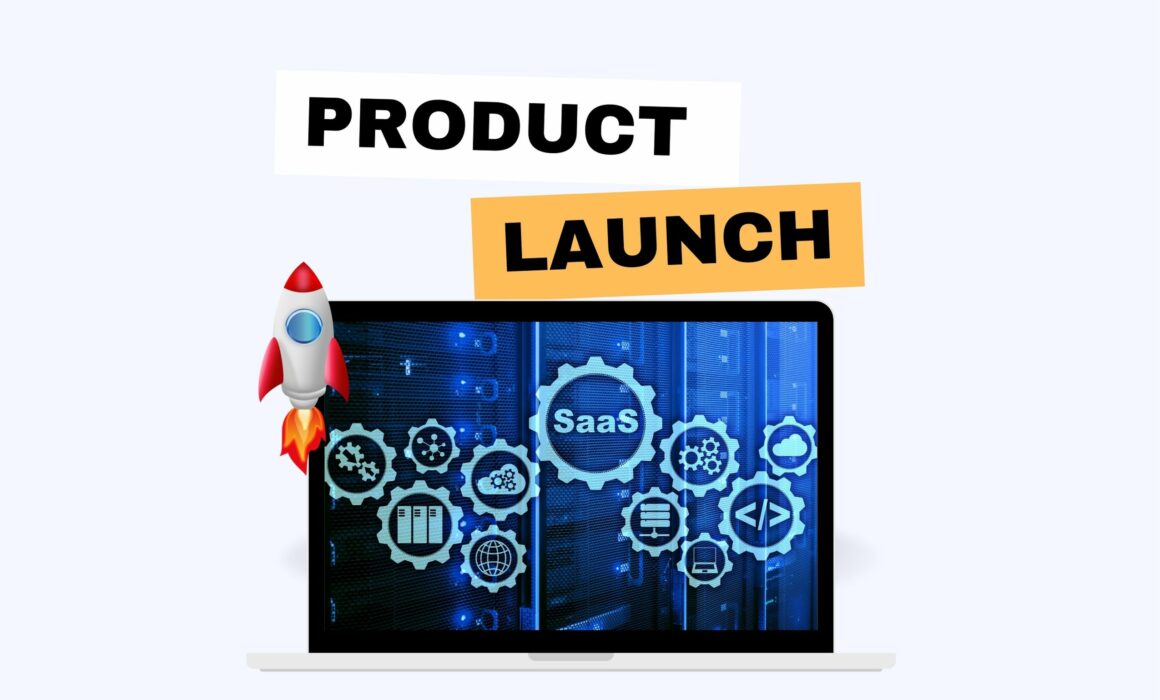How to Create a Successful Product Launch: Tips & Strategies
The product launch is one of the most crucial things a company can ever pull off. If done successfully, it can help a product skyrocket to soaring heights and even put businesses into another league. But if done poorly, it can severely affect the public’s reception towards the new offering and smear the company’s reputation.

These events are challenging, so product teams must do their best to ensure everything goes according to plan. They require extensive research and preparation to stand out in our competitive market. There’s more than meets the eye with these efforts, and it will require much work, planning and strategizing.
If you’re a product manager looking for ways to ensure a successful product launch, you’ve come to the right place. This article will cover some proven-and-tested tips for creating a successful product launch. Stick around to learn more about launching products and what you can do to execute them effectively.
Table of Contents
- What is a product launch?
- What is included in a product launch?
- Types of product launch
- When should you start planning for a product launch?
- Creating a product launch strategy
- #1. Set clear objectives
- #2. Identify your target audience
- #3. Develop key messages
- #4. Plan your marketing channels
- #5. Create engaging content
- #6. Build anticipation
- #7. Coordinate internal efforts
- #9. Set metrics and track results
- #10. Follow up with your audience even after the launch
- #11. Learn and iterate
- Product launch checklist
- What to expect from a product launch
- How to measure product launch success
- Examples of successful product launches
- Wrapping Up
- Machine Learning In Finance: 12 Essential Applications
- How To Create Interactive Compliance Training For Bank Employees
- How Fintech Apps Are Using Gamification To Increase User Engagement
- Top Gamification Companies for Employee & Customer Engagement
What is a product launch?
A product launch is the process of introducing new solutions to the market. It is a coordinated effort that involves careful planning and executing various marketing and promotional strategies. The main goal of this debut is to create awareness, generate excitement, and drive sales for a business’s new offering. It is a crucial ordeal that can set the product’s success and significantly impact product adoption and market penetration.

Product launches require collaboration among the multiple teams involved, like product, marketing, customer support, and more. Each of these groups must align themselves to ensure the product lifts off successfully. More importantly, these teams will work on what they do best and collaborate to hype the public’s interest and anticipation.
The results of a well-planned product launch
We’ve seen how these launches affect the public’s perception of the product. Back then, people used to camp outside Apple stores just to get their hands on the new iPhones. How did these devices become such blockbuster hits? Thanks to all the genius marketing campaigns Apple executed.
Poorly-planned product launches lead to failure
A failed product launch tends to result in more than a loss in sales. More often than not, they leave a bad taste in the consumers, forcing them to reconsider their patronage. Even worse, they might abandon their interests in your company, leaving you with little to no investment returns. Just look at what happened to the infamous New Coke launch or the Amazon Fire smartphone!

What is included in a product launch?
Executing a product launch requires more than a band of able-bodied professionals and their expertise. This monumental effort involves several critical tasks, each pivotal in the debut’s success. Let’s explore some of the things included in a product launch.
#1. Market Research
Researching the volatile market is a no-brainer for any product manager who aims to execute a successful product launch. For this reason, they must conduct thorough market research to gain tons of valuable insights, such as the following:
- Target customers
- Their needs and preferences
- The competition
- The product’s unique selling proposition (USP)
#2. Product Development
The product development stage happens early in the product’s life cycle. It’s arguably one of the most crucial parts of the product’s success. And it involves tasks such as designing, prototyping, and testing. These are all done to ensure the solution meets the customer’s requirements and delivers the maximum value possible. Additionally, this stage involves refining the product based on feedback and market insights.
#3. Goal-Setting
Product and product launch managers must establish a clear goal for the debut. We’re talking about things like sales targets, market share goals, brand positioning, and more. Objectives like these can provide the much-needed framework to ensure the launch’s success and even guide subsequent marketing efforts.
#4. Marketing Strategy
There’s no point in launching a product if the public isn’t aware of it. For this reason, hard-hitting marketing strategies must be set in place to ensure the maximum market impact.
#5. Pre-Launch Activities
Do you want to build anticipation even before the actual launch? Build up the hype by releasing teaser campaigns or by generating social media buzz with the help of celebrities or influencers. The goal is to create as much excitement and curiosity as possible amongst prospective customers.
#6. Launch Event
Most people equate the product launch to the launch event itself, and we can’t blame them! This event can take various forms, such as a live event, press conference, or coordinated digital campaign.
#7. Marketing and Promotion
The real fun happens after the launch event. The company must make sustained marketing efforts for the product to maintain its newfound momentum and drive sales. Some of the best promotional strategies include content marketing campaigns, PR activities, social media engagement, and collaborating with relevant influencers.
#8. Monitoring and Evaluation
Product teams must monitor everything throughout the different product launch phases. They must track key metrics, gather customer feedback, evaluate the launch’s success, and identify improvement areas for future product iterations.
Types of product launch
Once product teams have a better idea of the audience they want to reach, it’s time to choose what product launch to execute. Let’s explore the three main types of product launches based on the size of consumers you want to reach.
#1. Soft Launch
A soft launch involves announcing the solution only to a few people. This often happens without any ground-breaking announcements, or sometimes none at all! It might sound like a weird approach, but you’d be surprised by how many companies prefer it. This launch doesn’t get much attention; perfect for companies that aren’t ready to accommodate the influx of potential customers.

Soft launches are critical for businesses that want to announce their products without leaving large footprints. Think of these launches as an accountability mechanism that allows companies to address product imperfections before they hit the market. More importantly, soft launches can act as a catalyst, wherein businesses can gather preliminary insights useful for ensuring product-market fit.
#2. Minimal Launch
Sometimes it doesn’t make sense to arrange a grand product launch. This is where a minimal launch shines the brightest. This launch is usually executed by companies who want to unveil their products after a few tweaks or improvements. With a minimal launch, businesses can get the word out to the public without setting aside much for marketing spend.
#3. Full-Scale Launch
A full-scale product launch indicates that your product is officially ready for public use. It happens whenever companies want the whole market segment, competitors, and stakeholders to be aware of their new product. This is the best opportunity to elevate your brand and intensify your company’s reputation.

This type of launch is a go-big-or-go-home effort that requires all of the team’s hands to be on deck. It is a team effort involving heavy marketing budgets and time-intensive preparations. This is also the best option for organisations who want to bet on the highest chances for success.
When should you start planning for a product launch?
Contrary to popular belief, a product launch isn’t just a one-time event that people forget afterwards. It’s a process that involves the conglomeration of multiple variables that contribute individually to make the launch successful. One of these things is timing, and it dramatically matters when introducing new products to the market.

So when should you start planning for a product launch?
Many experts recommend businesses start planning for the launch day as soon as the team develops the new product. The plan doesn’t have to be perfect because it’s better to have a tentative launch date than nothing. Product teams can then shift their gears as the development process progresses and establish an actual plan.
Here are some questions product managers should answer to determine when it’s about time to plan for a product launch.
#1. Is the product in demand?
Some products are in higher demand during certain times of the year. Announcing the products during these moments can help businesses maximise sales and increase attention toward their offerings.
#2. Is the product relevant?
Launching a product when it’s irrelevant is not a good business move. Remember that consumers change their needs and preferences now and then, so product managers must stay updated with these trends. Businesses must do their best to ensure whatever solution they release is relevant and appealing to their customer base.
#3. Can the product perform in the current market?
Unsurprisingly, the market can sometimes be volatile, so businesses must anticipate when to announce their products. Keep in mind that the state of the market can pose either an opportunity or a threat to the launch. Some key factors businesses need to consider to gauge their product’s readiness include the economy and industry trends.
#4. How competitive is the market?
Launching a product when there’s little around it is a surefire way for companies to establish themselves as industry leaders. An excellent example is when OpenAI dominated the artificial intelligence scene with ChatGPT chatbot. Conversely, it would be unwise for businesses to introduce their products when the market is saturated with hard-hitting competitors.
#5. Do you have the budget necessary to launch a product?
Let’s face it: lack of financial resources will always hinder any product-related efforts a company may engage with. If businesses want their new product to lift off successfully, they better plan and secure enough budget for the task.
Creating a product launch strategy
The marketplace nowadays can be brutally competitive, and it wouldn’t be wise to step into the battlefield without any strategy. Many experts and business owners with their initial businesses believe it doesn’t matter how impressive a product is. Without a solid product launch, its newly introduced product’s chances for success will rapidly diminish.
Let’s review some steps you can take when developing your strategy so your product stays ahead of the competition.
#1. Set clear objectives
Start your strategy by defining what results you want your product launch to achieve.
Do you want to generate a buzz?
Do you want a spike in sales?
Or how about expanding your customer base?
What launch date do you want to target?

You can only achieve these if you set clear product launch objectives for you and your team to strive for. These objectives can help you guide your strategy and help you measure the effort’s success.
#2. Identify your target audience
The fastest way to ruin any product launch is to be unaware of your target audience’s needs and preferences. To avoid this, you must identify which demographics are more likely to use your products. Doing so can help you zero-in your marketing strategy and messaging toward the people that matter most for your products.
#3. Develop key messages
One of the best ways to capture the attention and interest of prospective customers is by crafting compelling key messages. These messages must highlight the unique selling points of your product. More importantly, they must eloquently address the pain points of your customers.
#4. Plan your marketing channels
Do your best to choose the right marketing channel to reach your target audience effectively. You can choose from many different digital platforms, such as social media and email marketing. Of course, let’s not forget traditional channels like print media, events, and PR!
#5. Create engaging content
High-quality content is your best friend to attract and retain your target audience’s attention toward your product. Some content you can try producing are educational emails, blog posts, videos, high-quality photos, and many more.

Additionally, you can optimise your content for search engines to improve your business discoverability and organic reach.
#6. Build anticipation
Try implementing pre-launch marketing activities to generate excitement and anticipation before your product launch. If done correctly, your target audience will be more thrilled to purchase your product once it’s available. These marketing tactics you can implement include teaser campaigns, pre-orders, exclusive offers, and more.
#7. Coordinate internal efforts
Some products may find product launches to be dreamy, but it’s certainly not true for many other product managers. This is because they can be highly chaotic when there’s no proper team coordination.

If you want your product launch to run smoothly, all the people involved must work and collaborate harmoniously together.
#9. Set metrics and track results
Setting up key performance indicators (KPIs) and metrics can help any product manager evaluate their product launch’s success. More importantly, the data and insights derived from them can help you make adjustments whenever necessary.
#10. Follow up with your audience even after the launch
After the initial launch, don’t forget to continue engaging with your customer base. Doing so will allow you to collect their feedback and help you address any arising concerns and issues faster. Remember that this ongoing communication can help your organisation build rapport and loyalty toward any target customer.
#11. Learn and iterate
Regardless of the result, continually evaluate the outcomes of your product launch strategy. Utilise any helpful information to identify potential areas of improvement for future product launches. More importantly, take note of what worked well and what didn’t.
Product launch checklist
There’s no denying that a product launch can be a massive challenge to pull off. There are many moving parts involved in this process, and it can be mind-boggling to monitor them all at once. To help product managers and product launch managers, we’ve decided to compile the best product launch tips.
- Define launch goals and objectives
- Define your target audience
- Determine if everyone in the team accomplished everything in the product roadmap
- Conduct market research
- Create a positioning statement
- Present to the stakeholders
- Develop a launch timeline
- Choose a product launch type
- Set a budget
- Plan a go-to-market strategy
- Develop a marketing collateral
- Prepare all the teams involved (marketing, customer support, IT, etc.)
- Refine product positioning and messaging
- Prepare launch campaigns
- Coordinate all internal efforts
- Complete the product’s technical documentation
- Define key performance indicators (KPIs) and metrics
- Conduct a premortem product launch
- Launch your product
- Evaluate the results of the product launch
What to expect from a product launch
Product launches can be chaotic yet extremely rewarding at the same time. This is especially true for companies planning or executing their first product launch. Things can go south due to inexperience, which makes creating and implementing a product launch plan overwhelming.
We’ve discussed earlier that product launches should begin during the product development stage. So, it’s understandable that some product features you want to integrate into your messaging may change or even disappear entirely. Unexpected variables will inevitably impact the development process and steer it off schedule. Because of this, organisations need to plan these efforts way ahead of time.
A product launch should be flexible
It must also account for flexibility since it’s guaranteed for the product to undergo more changes during the development stage. Remember that only 55% of product launches are executed on schedule because of various issues and concerns. These numbers are a tell-tale sign that product managers must allot more time to deal with relevant launch tasks.

Additionally, it’s much better for marketing efforts to focus more on building a buzz than on the release day. The launch process is tedious, so it’s better to maintain the momentum in the period following the organisation’s launch day.
How to measure product launch success
The best way to evaluate the product launch’s success is by establishing criteria that measure its performance. Look at some of the most effective KPIs and metrics when launching a product.
Pre-Launch
- Leads generated
- Digital engagement and interactions
- The K-Factor
- Website traffic/ page views
During Launch
- Lead generation
- Conversion rate
- Email open rate
- Costs
Post Launch
- Product trials
- Customer usage
- User retention
- Referrals
- Revenue
- Feedback
Examples of successful product launches
Did you know that 95% of new products out of around 300,000 released each year fail? Organisations must step up their product launch game if they want to hit the bullseye and win the market’s favour. To inspire product managers, explore some successful product debuts that significantly impacted the world.
#1. Apple’s Macbook Air
Apple is one of the leading authorities in launching products. They’re making their launches memorable by leveraging storytelling that projects esteem and self-actualisation. They consistently produced profitable products in the past few years.
Just look at how Steve Jobs introduced the Macbook Air in 2008.
#2. Dollar Shave Club
Sometimes, all a business needs to launch is a direct-to-the-point video with a hint of cynical humour. An excellent example of this stunt would be Dollar Shave Club, which offers razors and other personal grooming products.
They’ve used a simple explainer video that showcased what their company is all about straight-talking but amusing video. Understandably, this gimmick won’t make sense for some. However, it hit the spot for a niche community tired of using expensive razors.
Dollar Shave Club eventually became a powerhouse and was later acquired by Unilever for a whopping $1 billion. All thanks to a simple explainer video as a product launch.
#3. Amazon’s Kindle
Amazon used its unique position as “The World’s Largest Bookstore” and revolutionised how readers consume media through the Kindle device. The release of Amazon’s Kindle resulted in an overnight success, dominating the eBook market in a blink of an eye.

For those unaware (and still prefer hardcovers), Kindle is a device that allows users to read ebooks. These ebooks may come from Amazon or other sources. It even supports multiple file formats such as PDFs, ePUBs, and MOBIs!
Wrapping Up
The product launch is just one of the challenges a product manager might face throughout their careers. However, it’s also one of the most exciting highlights of their careers. Here at Mambo.io, we’re delighted to provide product managers with everything they need to excel in their careers! Please browse our blogs to learn more about product management and other relevant topics that interest you.
Download your free
“Gamification Guide”
Get your PDF now and start transforming your approach to digital engagement!
Latest Posts
Machine Learning In Finance: 12 Essential Applications
The impact of machine learning on finance is significant. Thanks to this technology, financial institutions are now equipped to make efficient decisions. Through the analysis of data sets, machine learning […]
How To Create Interactive Compliance Training For Bank Employees
Banking compliance training isn’t just another task. It’s the stage where everything else performs. Banks must navigate a myriad of regulations and laws. After all, this is a trust-driven, high-stakes […]
How Fintech Apps Are Using Gamification To Increase User Engagement
Discover how gamification in fintech is revolutionizing financial engagement, making banking fun & boosting user loyalty.









